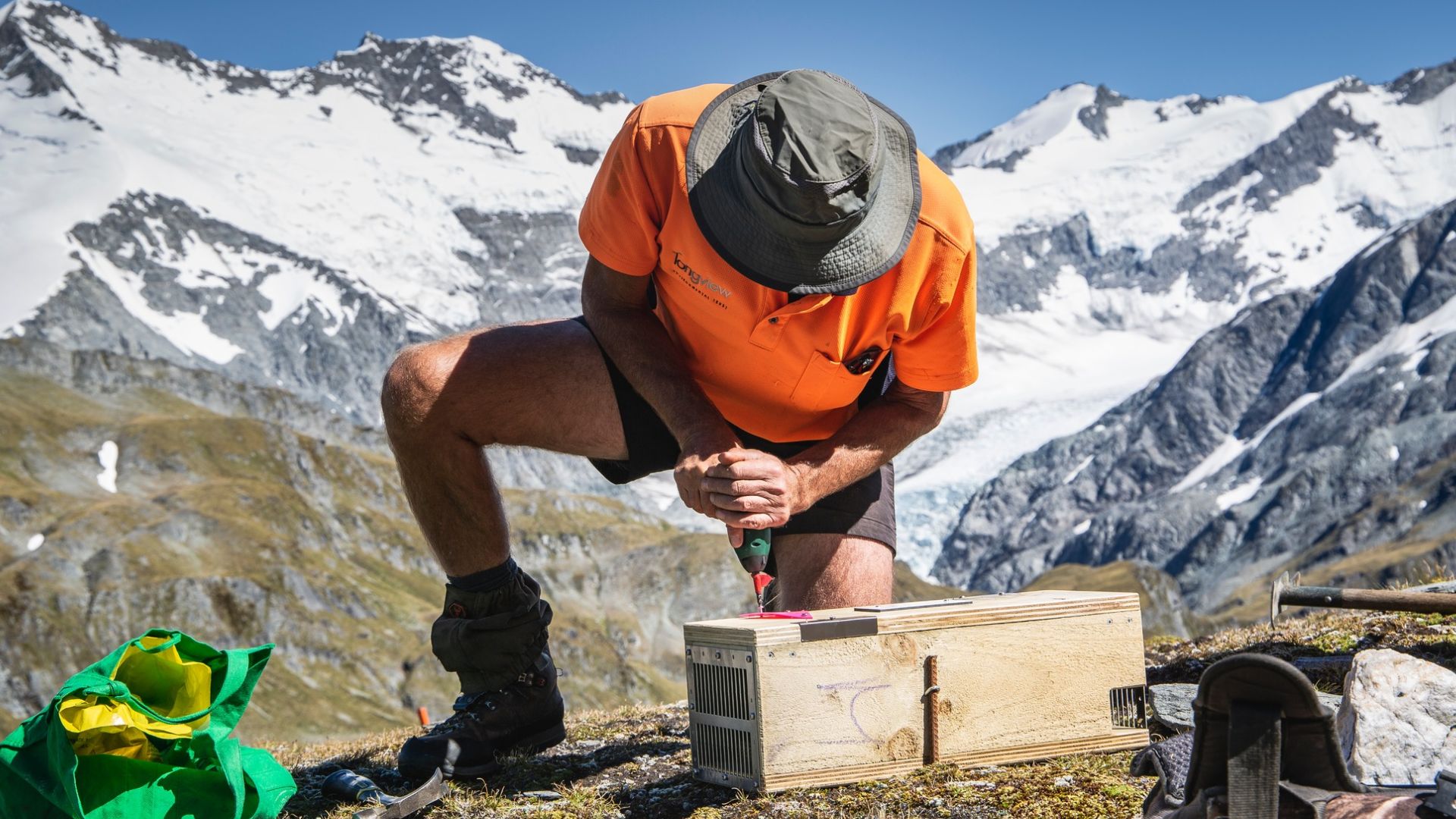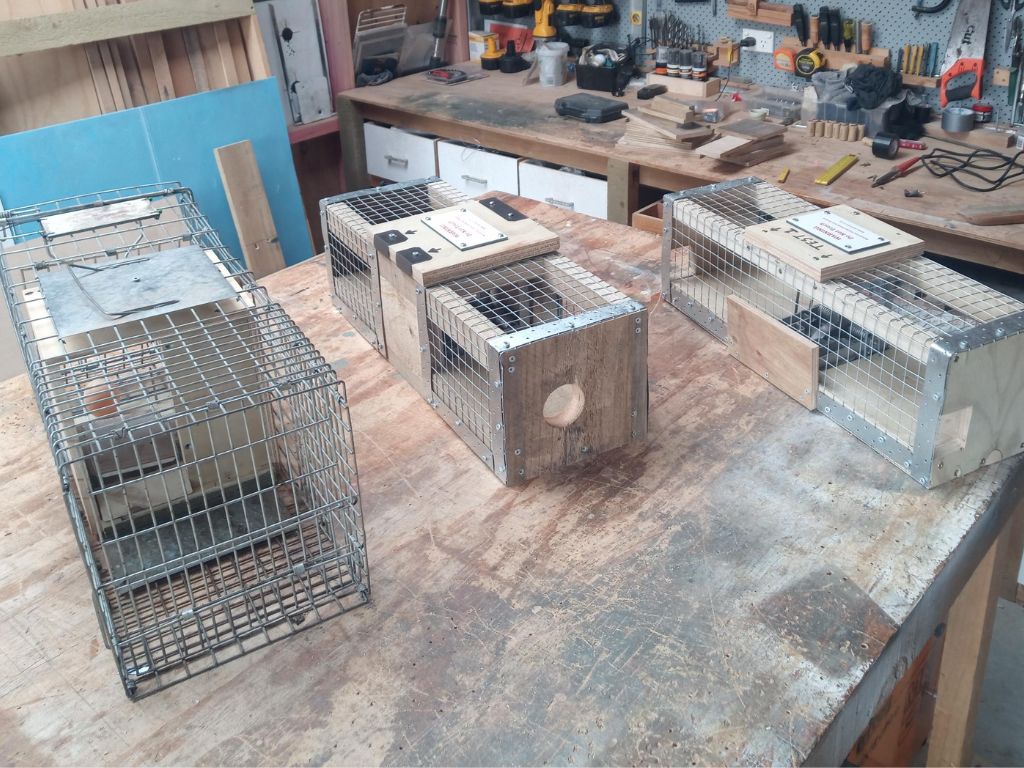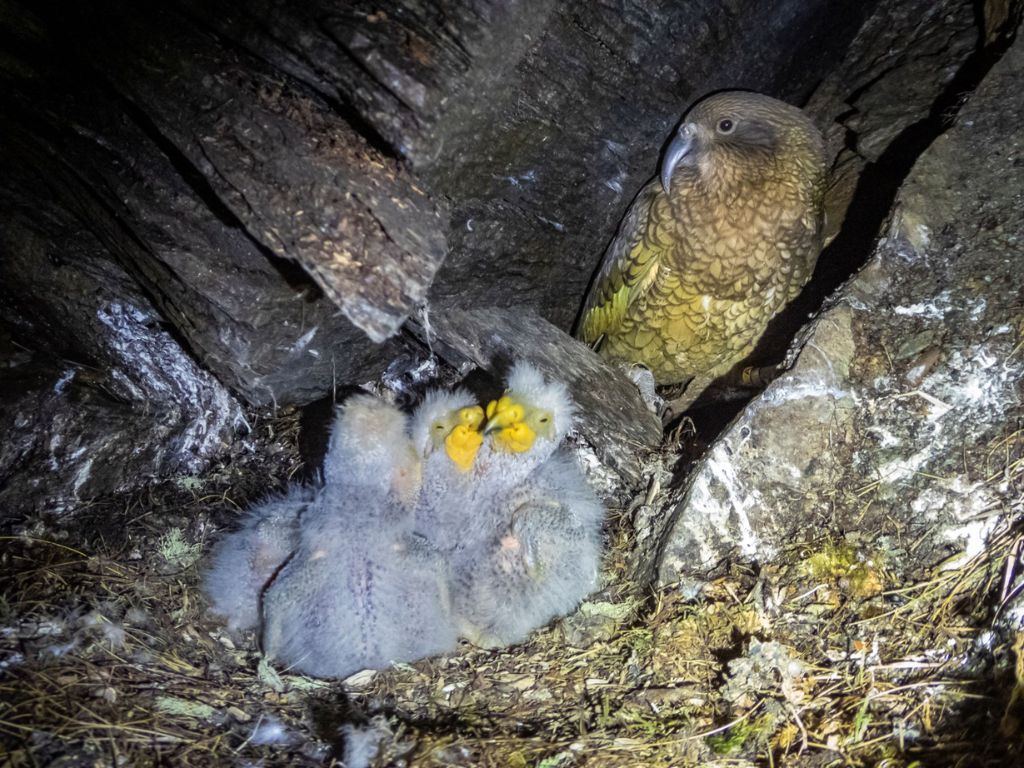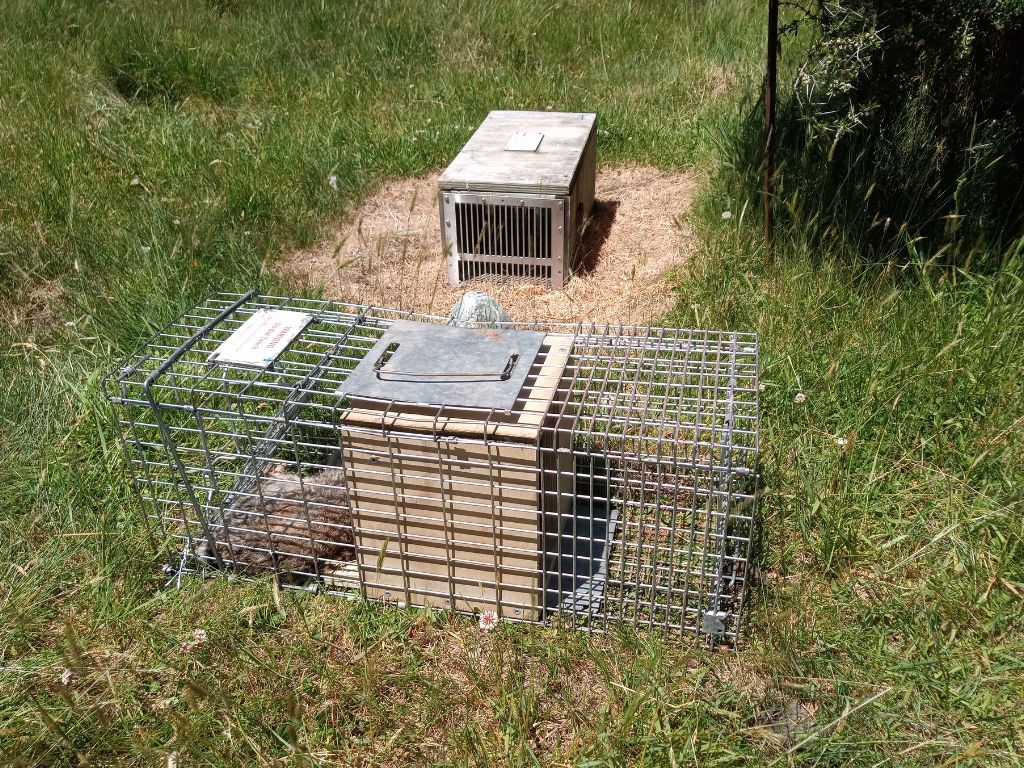Predators are being trapped in record numbers in the West Matukituki Valley — but some cunning survivors are slipping through the cracks. Now, a local conservation group is trialling new trap designs to catch the ones that get away.

An incredible team of volunteers works hard to maintain a staggering 1,000 traps across 5,500 hectares of the West Matukituki Valley. In 2024, they trapped 1,293 predators, including 29 feral cats — almost double the 686 predators caught the year before.
Even with all that hard work, a trail camera hidden in the bush captured alarming footage of stoats walking right past traps and feral cats confidently clambering over them.
“The problem is still there and doesn’t seem to be reducing,” Matukituki Charitable Trust co-founder Derek Crombie says.
“We’re still catching as many predators today as we were in the first years.”
Derek says the trail camera evidence showing uninterested predators is as helpful as it is disheartening.
“We picked up a nest of kittens that had been bred up there. They were very healthy-looking kittens.

“It can be incredibly infuriating because you see a photograph of cats climbing all over the trap, but you can’t do anything about it. But the cameras are real proof of what you’re dealing with.”
Traps, camera, action
Southern Lakes Sanctuary and the Matukituki Charitable Trust work together, monitoring 26 cameras around the valley along with day-to-day trapping.
Matukituki Hub Coordinator Scott Bewley says footage showed that stoats were steering clear of standard DOC traps but were less cautious if a lure was out in the open.

They’ve begun trialling two new trap designs alongside existing traps, with money from the Annie Currie Legacy Fund, administered by the Predator Free New Zealand Trust.
Both new designs use standard DOC traps and meet all kea-proof requirements.
One design is a run-through mesh tunnel, where predators can see inside from all sides. The other is a modified live capture cage. Inside, there’s the lure and a DOC trap tucked into an inset.
While the trial is in its infancy, it’s already informing a novel approach to catching trap-shy stoats and cats.
They found that cats became less wary of cage traps the longer they were in the environment.
“If we can find a way to better mimic nature by creating a more inviting environment for predators, maybe we can catch more of them, especially the very wary ones,” Scott hopes.
A chorus of success
After 13 years of predator control efforts, the West Matukituki Valley’s bush-cloaked slopes echo with the calls of kea, kākā, kākāriki, pīwauwau (rock wren), titipounamu (rifleman), ngirungiru (tomtit), pīwakawaka (fantail), korimako (bellbird), and kakaruai (South Island robin).
While the dawn chorus is an idyllic start for most, not everyone finds it so blissful.
Derek says their conservation success in the area over the years has come with unexpected side effects.
“One of the people staying at Aspiring Hut recently complained to the ranger that he couldn’t sleep because the bird noise was too loud,” Derek laughs.

Derek and wife Gillian raised their three daughters tramping in the valley and began noticing a decline in kea around the early 2000s.
“We just weren’t having encounters like we used to,” Derek explains.
They approached the Department of Conservation (DOC), which said there weren’t enough resources to protect the kea, the world’s only alpine parrot. After researching effective trapping methods, the couple established the Matukituki Charitable Trust and partnered with DOC to “give it a go” themselves.
Thirteen years of dedicated slog and countless volunteer trapping hours later, bird counts have roughly doubled.
“We’re now seeing flocks of kea back down to the homestead, whereas we were previously only seeing individual birds,” Derek says.
But it’s not just the kea benefiting from the efforts.
In 2008, DOC reintroduced 22 kakaruai (South Island robins) to the Matukituki Valley after an absence of 30 years. Now, there are hundreds. And they’re everywhere.
“They’ve filled the valley and migrated down it, so they’re a really strong indicator [that things are going well],” Derek says.
Kākāriki and kārearea (New Zealand falcon) are also a more regular sight.
Hope beyond the Matukituki hills

Ultimately, the group wants to share the findings from their new trap design trial with others facing the same predicament.
“The more tools we have, the more chances there are to provide a safer home for our struggling native species.”
Derek hopes the trial can make a difference in moving from suppression of predators to full-bore elimination.
“We’re all working to get improvements that’ll get us closer to that elimination point. The aim of this trial is just to try something different.”

